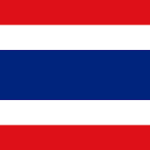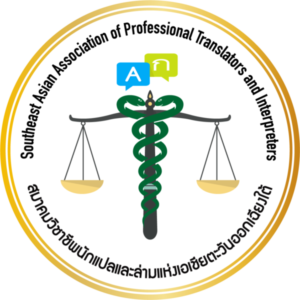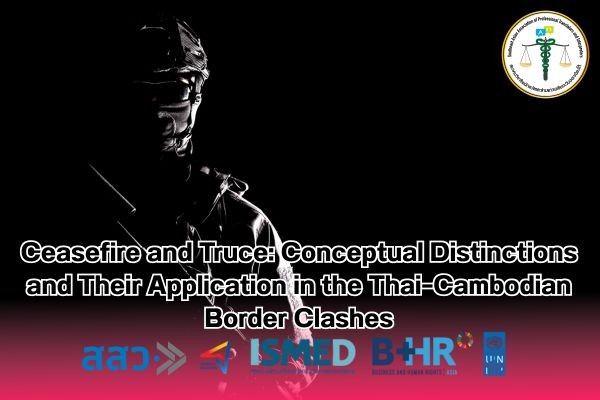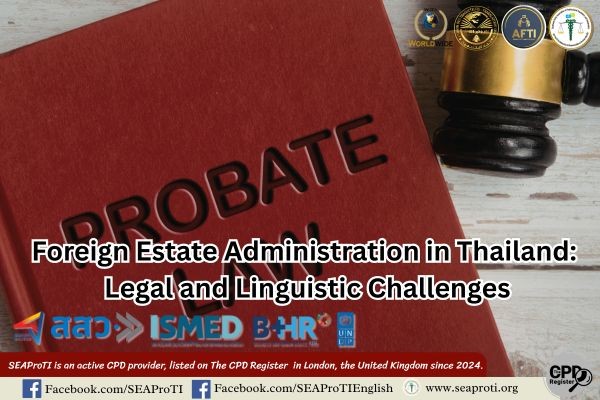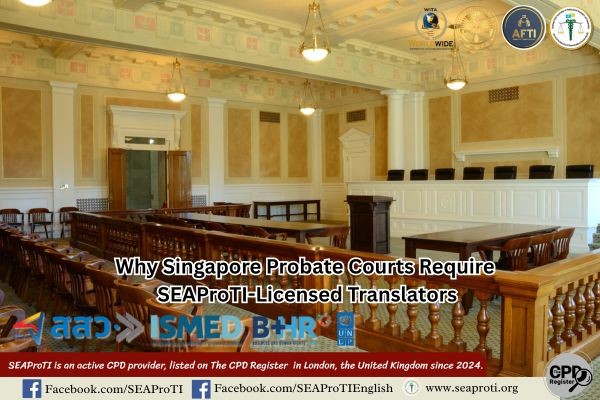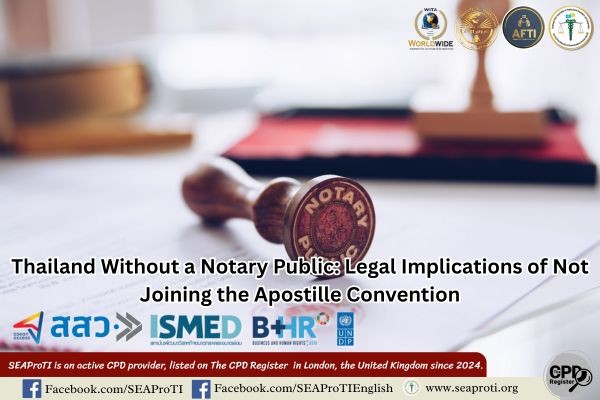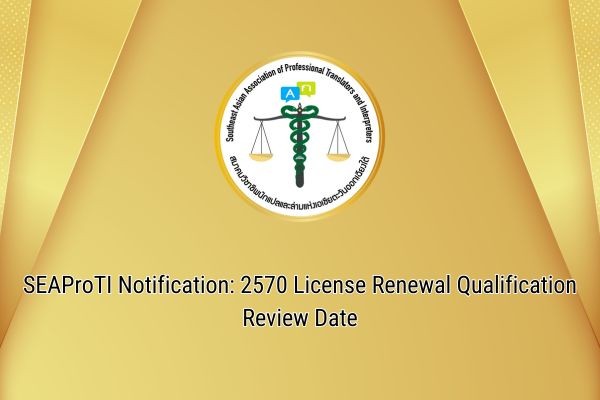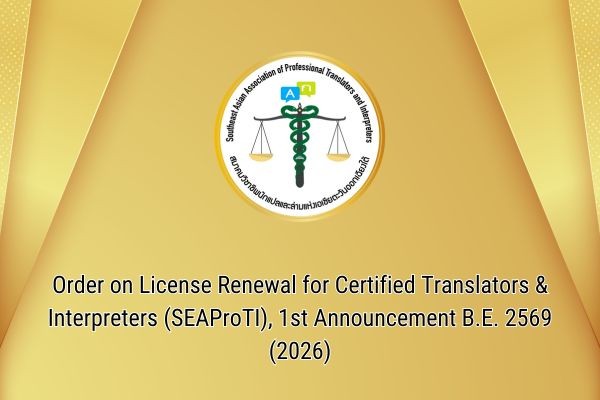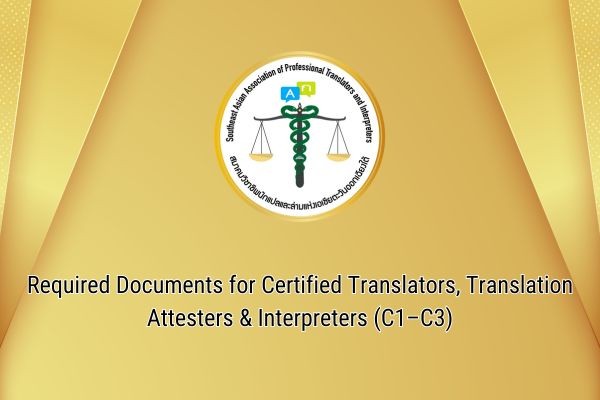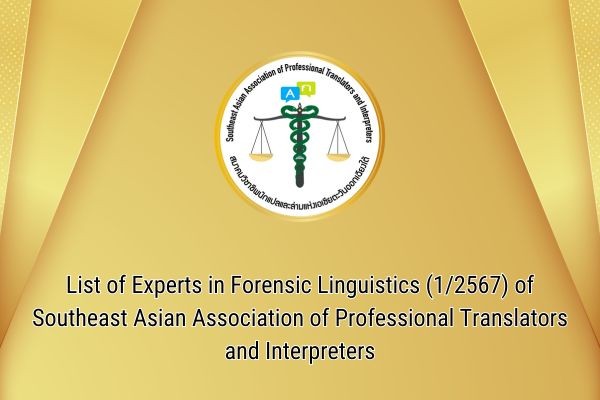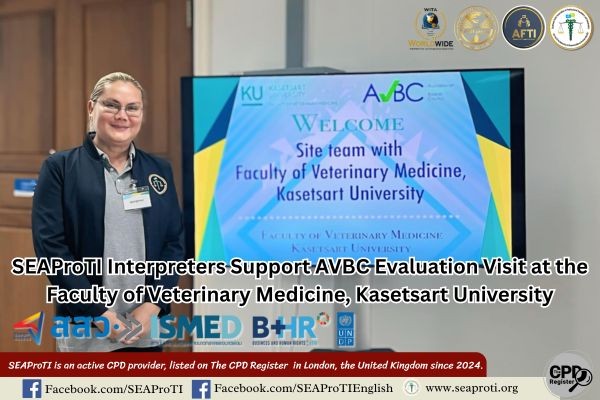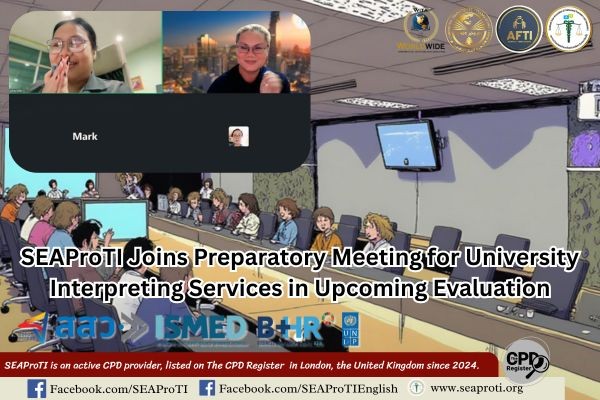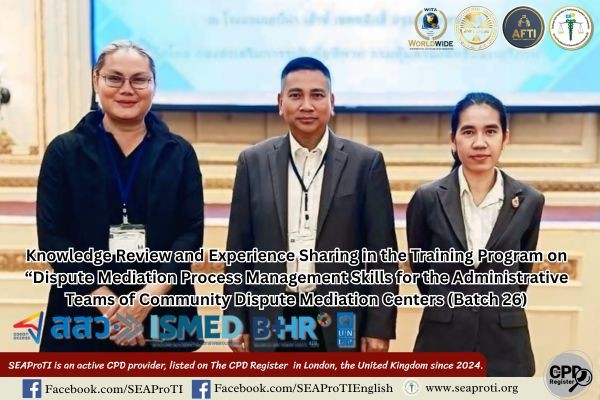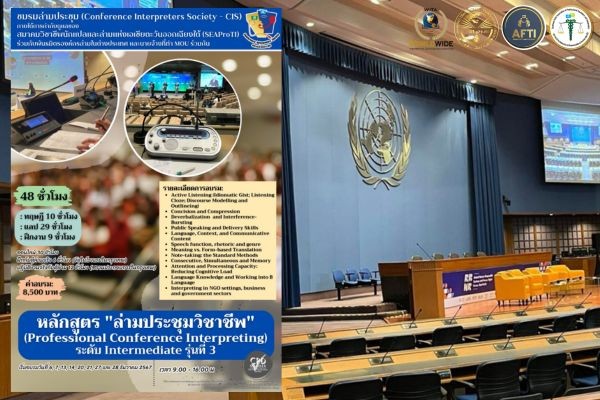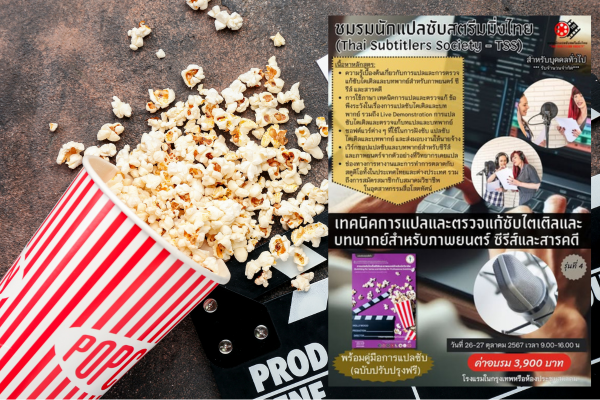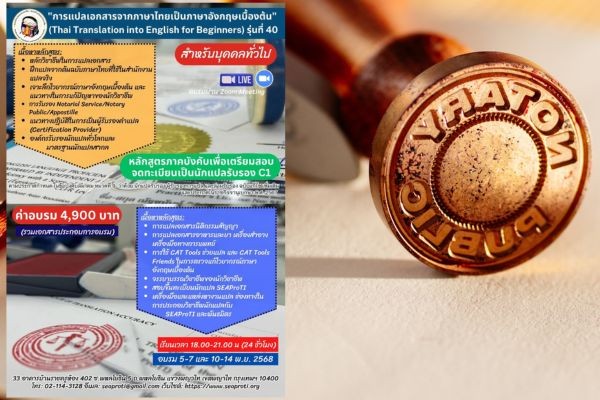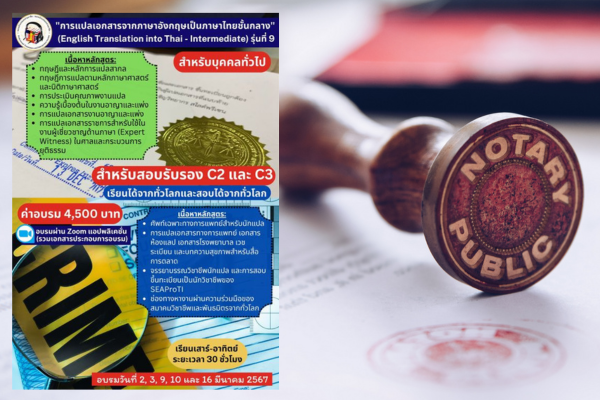Ceasefire and Truce: Conceptual Distinctions and Their Application in the Thai–Cambodian Border Clashes
Author: Wanitcha Sumanat, president of the Southeast Asian Association of Professional Translators and Interpreters
19 August 2025, Bangkok – In international relations, the terms “ceasefire” and “truce” are often used interchangeably to denote the suspension of hostilities. However, they carry different conceptual meanings and implications in practice. This distinction is particularly relevant in the case of the Thai–Cambodian border clashes, which have recurred over the past two decades. Understanding the difference is crucial for interpreting the status of the conflict and the role of international organizations such as ASEAN and the United Nations.
The Meaning and Implications of Ceasefire
A ceasefire refers to the suspension of military hostilities, usually focusing on halting shooting and combat operations. It can result from a unilateral declaration or a bilateral/multilateral agreement. The primary aim of a ceasefire is to prevent further loss of life and damage, without necessarily addressing the underlying causes of the conflict (Bell, 2006).
Ceasefires are often accompanied by specific military conditions, such as temporary suspension of fighting for humanitarian access, establishment of safe zones, or the creation of channels for diplomatic negotiations (United Nations, 2008).
The Meaning and Implications of Truce
A truce, by contrast, implies more than just halting gunfire. It involves the voluntary suspension of hostilities and confrontations by both parties in order to create a conducive atmosphere for political or peace negotiations (Howard, 2018).
Diplomatically, the term truce is commonly used in contexts of full-scale war, where adversaries seek a temporary suspension of fighting to facilitate dialogue or regrouping. A classic example is the “Christmas Truce” during World War I, when soldiers informally suspended hostilities along the Western Front (Brown, 2014).
Application in the Thai–Cambodian Border Clashes
In the Thai–Cambodian border dispute—particularly around the Preah Vihear temple area (2008–2011) and the renewed clashes in 2025—the term most frequently employed in official military communications and news reports is ceasefire, rather than truce.
The reasons include:
- Nature of the conflict – The clashes were localized and limited to specific border areas, rather than a full-scale war between the two states.
- Practical measures – Both militaries typically issued “ceasefire orders” to prevent escalation, rather than announcing broader political truces.
ASEAN involvement – Mechanisms such as the Regional Border Committee (RBC) and the ASEAN observer missions consistently referred to “ceasefire agreements” (ASEAN, 2011).
Thus, in this context, the use of the term truce would be less accurate, as the situation did not represent a political-level suspension of war, but rather a tactical cessation of hostilities.
Conclusion
- Ceasefire = A military-oriented term, emphasizing the immediate halting of gunfire and combat operations.
- Truce = A political/diplomatic concept, implying a broader suspension of hostilities to enable negotiations.
In the Thai–Cambodian border clashes, the events are more accurately categorized as ceasefires, rather than truces, since the disputes were geographically limited and did not amount to a formal war between the two nations.
References
- ASEAN. (2011). Report of the ASEAN Ministers’ Meeting on the Thai-Cambodian Border Dispute. Jakarta: ASEAN Secretariat.
- Bell, C. (2006). Peace agreements and human rights. Oxford University Press.
- Brown, M. (2014). The Christmas truce: Myth, memory, and the First World War. Cambridge University Press.
- Howard, M. (2018). War and peace in the modern world. Yale University Press.
- United Nations. (2008). United Nations peacekeeping operations: Principles and guidelines. Department of Peacekeeping Operations.
About Certified Translators, Translation Certification Providers, and Certified Interpreters of SEAProTI
The Southeast Asian Association of Professional Translators and Interpreters (SEAProTI) has announced the qualifications and requirements for individuals registered as Certified Translators, Translation Certification Providers, and Certified Interpreters of the Association, as stated in Chapter 9 and Chapter 10 of the Royal Gazette of the Secretariat of the Cabinet, Office of the Prime Minister of the Kingdom of Thailand, dated July 25, 2024, Volume 141, Part 66 Ngor, p. 100. Full details can be accessed at: The Royal Thai Government Gazette
SEAProTI is the first professional association in Thailand and Southeast Asia to establish a certification system for Certified Translators, Translation Certification Providers, and Certified Interpreters.
Head Office: Baan Ratchakru Building, Room 402, No. 33, Soi Phahonyothin 5, Phahonyothin Road, Phayathai District, Bangkok 10400 Email: hello@seaproti.com Telephone: (+66) 2-114-3128 (Business hours: Monday–Friday, 9:00 a.m.–5:00 p.m.)
Ceasefire และ Truce: ความแตกต่างทางแนวคิดและการประยุกต์ใช้ในกรณีปะทะชายแดนไทย–กัมพูชา
ผู้แต่ง วณิชชา สุมานัส นายกสมาคมวิชาชีพนักแปลและล่ามแห่งเอเชียตะวันออกเฉียงใต้
19 สิงหาคม 2568, กรุงเทพมหานคร – ในทางความสัมพันธ์ระหว่างประเทศ คำว่า “ceasefire” และ “truce” มักถูกใช้สลับกันเพื่อหมายถึงการยุติการสู้รบ อย่างไรก็ตาม ทั้งสองคำมีความแตกต่างกันทั้งด้านแนวคิดและการประยุกต์ใช้ในทางปฏิบัติ โดยเฉพาะอย่างยิ่งในกรณีพิพาทชายแดนไทย–กัมพูชาที่เกิดขึ้นหลายครั้งในรอบสองทศวรรษที่ผ่านมา ความแตกต่างนี้มีความสำคัญต่อการทำความเข้าใจสถานะของความขัดแย้ง ตลอดจนการแทรกแซงขององค์การระหว่างประเทศ เช่น อาเซียนและสหประชาชาติ
ความหมายและนัยยะของ Ceasefire
Ceasefire หมายถึง การหยุดยิงหรือยุติการสู้รบทางทหาร โดยตรง ซึ่งอาจเกิดจากคำสั่งฝ่ายเดียว (unilateral declaration) หรือข้อตกลงร่วมกัน (bilateral/multilateral agreement) จุดมุ่งหมายหลักคือการระงับการใช้กำลังเพื่อป้องกันการสูญเสียเพิ่มเติม โดยไม่จำเป็นต้องมีผลต่อการแก้ไขปัญหาความขัดแย้งเชิงโครงสร้าง (Bell, 2006)
Ceasefire มักถูกกำหนดด้วยเงื่อนไขทางทหาร เช่น การหยุดยิงชั่วคราวเพื่ออำนวยความสะดวกด้านมนุษยธรรม การจัดตั้งเขตปลอดภัย หรือการเปิดช่องทางเจรจาทางการทูต (United Nations, 2008)
ความหมายและนัยยะของ Truce
Truce หรือ “สงบศึก/พักรบ” มีนัยยะกว้างกว่า ceasefire โดยไม่เพียงหมายถึงการหยุดยิง แต่ยังรวมถึง การยุติการเผชิญหน้าทางการเมืองและการทหารโดยสมัครใจ เพื่อเปิดโอกาสในการเจรจาสันติภาพ (Howard, 2018)
ในเชิงภาษาการทูต truce มักถูกใช้ในบริบทที่คู่ขัดแย้งอยู่ในภาวะสงครามเต็มรูปแบบและต้องการพักรบชั่วคราวเพื่อหาทางออกทางการเมือง เช่น สงครามโลกครั้งที่ 1 ที่มีการตกลง “Christmas Truce” ระหว่างทหารแนวหน้า (Brown, 2014)
การประยุกต์ใช้ในกรณีปะทะชายแดนไทย–กัมพูชา
กรณีพิพาทชายแดนไทย–กัมพูชา เช่น ความขัดแย้งบริเวณปราสาทพระวิหาร (พ.ศ. 2551–2554) และการปะทะที่เกิดขึ้นอีกครั้งใน พ.ศ. 2568 ส่วนใหญ่ใช้คำว่า ceasefire มากกว่า truce ทั้งในรายงานข่าวและเอกสารทางการทหาร
เหตุผลหลัก ได้แก่
- ลักษณะของความขัดแย้ง – เป็นการปะทะเฉพาะพื้นที่ (localized clashes) ไม่ใช่สงครามเต็มรูปแบบระหว่างสองรัฐ
- มาตรการที่ใช้จริง – กองทัพทั้งสองฝ่ายมักออกคำสั่ง “หยุดยิง” เพื่อป้องกันการขยายวงความรุนแรง มากกว่าการประกาศสงบศึกทางการเมือง
- การแทรกแซงของอาเซียน – คณะกรรมการชายแดนภูมิภาค (Regional Border Committee: RBC) และทีมผู้สังเกตการณ์อาเซียนต่างใช้คำว่า ceasefire agreement (ASEAN, 2011)
ดังนั้น การใช้คำว่า truce จึงไม่เหมาะสมในกรณีนี้ เพราะยังไม่ใช่การยุติการสู้รบในเชิงการเมืองระหว่างรัฐ หากแต่เป็นการหยุดยิงในเชิงยุทธวิธีเท่านั้น
สรุป
- Ceasefire = ภาษาการทหาร, เน้นการ “หยุดยิง” โดยตรง
- Truce = ภาษาการทูต/การเมือง, เน้นการ “พักรบ/สงบศึก” เพื่อลดความตึงเครียดและเปิดทางการเจรจา
ในกรณีปะทะชายแดนไทย–กัมพูชา เหตุการณ์ที่เกิดขึ้นควรถูกจัดประเภทเป็น ceasefire มากกว่า truce เนื่องจากความขัดแย้งมีลักษณะจำกัดพื้นที่และยังไม่พัฒนาไปสู่สงครามเต็มรูปแบบ
เอกสารอ้างอิง
- ASEAN. (2011). Report of the ASEAN Ministers’ Meeting on the Thai-Cambodian Border Dispute. Jakarta: ASEAN Secretariat.
- Bell, C. (2006). Peace agreements and human rights. Oxford University Press.
- Brown, M. (2014). The Christmas truce: Myth, memory, and the First World War. Cambridge University Press.
- Howard, M. (2018). War and peace in the modern world. Yale University Press.
- United Nations. (2008). United Nations peacekeeping operations: Principles and guidelines. Department of Peacekeeping Operations.
เกี่ยวกับนักแปลรับรอง ผู้รับรองการแปล และล่ามรับรองของสมาคมวิชาชีพนักแปลและล่ามแห่งเอเชียตะวันออกเฉียงใต้
สมาคมวิชาชีพนักแปลและล่ามแห่งเอเชียตะวันออกเฉียงใต้ (SEAProTI) ได้ประกาศหลักเกณฑ์และคุณสมบัติผู้ที่ขึ้นทะเบียนเป็น “นักแปลรับรอง (Certified Translators) และผู้รับรองการแปล (Translation Certification Providers) และล่ามรับรอง (Certified Interpreters)” ของสมาคม หมวดที่ 9 และหมวดที่ 10 ในราชกิจจานุเบกษา ของสำนักเลขาธิการคณะรัฐมนตรี ในสำนักนายกรัฐมนตรี แห่งราชอาณาจักรไทย ลงวันที่ 25 ก.ค. 2567 เล่มที่ 141 ตอนที่ 66 ง หน้า 100 อ่านฉบับเต็มได้ที่: นักแปลรับรอง ผู้รับรองการแปล และล่ามรับรอง
*สมาคมวิชาชีพนักแปลและล่ามแห่งเอเชียตะวันออกเฉียงใต้ เป็นสมาคมวิชาชีพแห่งแรกในประเทศไทยและภูมิภาคเอเชียตะวันออกเฉียงใต้ที่มีระบบรับรองนักแปลรับรอง ผู้รับรองการแปล และล่ามรับรอง
สำนักงานใหญ่: อาคารบ้านราชครู เลขที่ 33 ห้อง 402 ซอยพหลโยธิน 5 ถนนพหลโยธิน แขวงพญาไท เขตพญาไท กรุงเทพมหานคร 10400 อีเมล: hello@seaproti.com โทรศัพท์: (+66) 2-114-3128 (เวลาทำการ: วันจันทร์–วันศุกร์ เวลา 9.00–17.00 น.)
